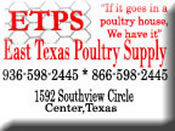
Periwinkles needs bright sun, good drainage, and limited irrigation to avoid periwinkle blight.
July 9, 2024 - This is your annual reminder to avoid frequent overhead irrigation to prevent periwinkle blight. Periwinkle blight, also known as aerial phytophthora, is a major problem for annual vinca or periwinkle (Catharanthus roseus). This disease is caused by the fungus Phytophthora parasitica and can linger in the soil for several years. Unfortunately, periwinkle blight often results from a lack of understanding of the disease triangle, which includes a host, a pathogen, and the right environmental conditions.
When overhead irrigation or frequent rainfall occurs, periwinkle blight spreads quickly. Infected plant material often introduces the fungus into landscapes. Once established, aerial phytophthora can repeatedly affect periwinkles in both residential and commercial plantings.
Symptoms of Periwinkle Blight
The first signs of this disease are water-soaked, gray-green, “greasy” areas on the shoots and leaves. This is quickly followed by the wilting of shoots. As the disease progresses, dark brown lesions appear on the stems, leading to the death of the stem or the entire plant. In wet conditions, the fungus can move from plant to plant through leaf contact or splashing water. If the foliage stays wet, the disease can spread rapidly, killing plants within one to two weeks after symptoms appear.
Rules for Growing Healthy Periwinkles
To successfully grow periwinkles and avoid periwinkle blight, follow these important guidelines:
- Plant Timing: Do not plant periwinkles until after Mother’s Day or even Memorial Day. They originate from Africa and prefer hot, dry conditions. They are summer bedding plants, not spring bedding plants.
- Healthy Transplants: Choose only pristine transplants with no dead shoots or brown lesions on the stems.
- Irrigation Practices: Avoid overhead irrigation. Keep stems and foliage dry, and never water at night. Aerial phytophthora spreads by water. After the initial watering, periwinkles rarely need supplemental irrigation in East Texas, typically no more than once a week during June, July, and August, only.
- Sunlight and Soil: Plant periwinkles in full sun and well-drained soils. This promotes more blooms and ensures the plants and soil do not stay too moist.
- Fertilization: Do not over-fertilize, as new succulent shoots are more susceptible to the disease.
- Sanitation: Remove dead shoots or dying plants immediately. Discard them in plastic trash bags with your garbage to minimize the disease in the future. Sanitation is crucial in preventing plant diseases.
- Planting History: Avoid planting periwinkles in beds with a history of aerial phytophthora as the spores for inoculation remain there.
- Disease-Resistant Varieties: If possible, plant periwinkles from the ‘Cora’ series, which have some genetic resistance to the disease.
- Fungicide Use: Chlorothalonil (Daconil) fungicide can protect healthy plants from the disease but will not cure infected plants.
- Raised Beds and Containers: Plant periwinkles in raised beds and containers for extra aeration and drainage.
Growing periwinkles successfully is all about sanitation and minimizing water contact with the plants. Keep them in hot, sunny locations, and on the dry side. By following these guidelines, you can enjoy beautiful, healthy periwinkles in your garden, free from the threat of periwinkle blight.
Greg Grant is the Smith County horticulturist and Master Gardener coordinator for the Texas A&M AgriLife Extension Service. He is the author of Texas Fruit and Vegetable Gardening, Texas Home Landscaping, Heirloom Gardening in the South, and The Rose Rustlers. You can read his “Greg’s Ramblings” blog at arborgate.com, read his “In Greg’s Garden” in each issue of Texas Gardener magazine (texasgardener.com), or follow him on Facebook at “Greg Grant Gardens.” More science-based lawn and gardening information from the Texas A&M AgriLife Extension Service can be found at aggieturf.tamu.edu and aggie-horticulture.tamu.edu.








